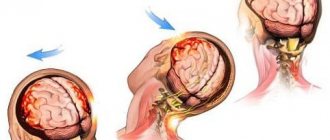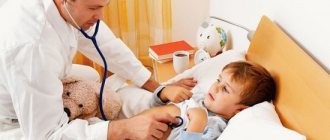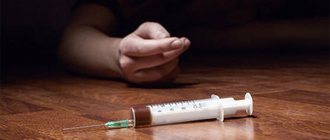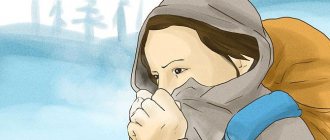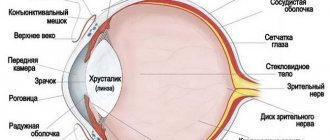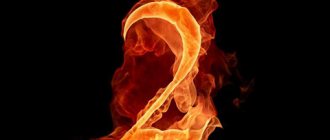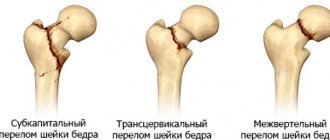Characteristic
The prevalence of the pathology is about 10 cases per 1 thousand population.
In total, there are about 50 million patients in the world. Most of them are children and teenagers. Patients who have epilepsy are 3 times more likely to die prematurely. Adequate medical care for epilepsy is an effective measure to prevent seizures. Studies show that in 70% of patients, the development of attacks can be prevented if the disease is treated correctly. During an epileptic seizure, it is important to help the patient in order to avoid complications, such as with convulsive status - pulmonary edema, impaired respiratory and cardiac activity. The diagnosis is made if there is a history of more than 2 attacks. In pediatric practice, to make a diagnosis, 1 attack in history is sufficient against the background of a high probability of its recurrence (according to the results of electroencephalography).
Features of the disease
Epileptics have increased brain activity associated with electrical impulses. In different parts of the organ, a disorder occurs, manifested by specific attacks - epileptic seizures. In the general clinical picture, various mental disorders are observed; they define a group of symptoms.
Manifestations of epilepsy are varied, have a broad classification, and occur with or without seizures. All this can negatively affect the human body, so help for epilepsy should be provided on time.
What types of seizures do people experience most often?
- obvious, recognizable (tonic-clonic seizure, complex focal disorders);
- less noticeable (aura, absence seizures...).
Less obvious seizures may not cause a reaction from others, because they can be confused with the characteristics of a person’s behavior (looking at one point, does not answer the question - lost in thought, a sudden change in mood is also possible).
Symptoms that are not so dangerous in appearance can be a sign of an approaching serious attack (as an aura). Or they can occur on their own without causing complications.
In any case, if a mild form of epilepsy occurs (or is suspected), the person should be protected from all negative external factors (noise, cold, heat), not try to restrain him in his actions, and help him become as comfortable as possible.
Whatever the causes of an epileptic attack, first aid should be provided quickly and correctly.
Causes
To understand what to do during an epileptic attack, it is important to understand the causes of the condition. The idiopathic (true) form is caused by channelopathy - a violation of the structure and function of ion channels, which leads to instability of nerve cell membranes. The idiopathic form often develops due to a hereditary predisposition.
The symptomatic form develops as a result of organic damage to the brain, as a consequence of tumor processes, intracranial hemorrhages, acute disturbance of cerebral blood flow, head injury, withdrawal syndrome due to alcohol intoxication.
Seizures occur due to increased bioelectrical activity of the brain. Depending on the location of the pathological focus in the brain tissue, seizures occur throughout the body or in individual parts. Nerve cells in certain areas of the brain become overexcited, which leads to the transmission of incorrect impulses. The doctor will tell you what to do if a person has an epileptic attack and how to prevent it, taking into account what factors usually provoke it:
- Lack of sleep.
- Stressful situation.
- Deficiency of vitamin D, B6, calcium in infants.
- Carbon monoxide intoxication.
- Alcohol intoxication.
- Hypertensive crisis (increased blood pressure to a critical level).
An attack of symptomatic epilepsy can be triggered by factors such as watching music videos, television programs, video images where frames flash frequently on the screen, or rapid changes in black and white backgrounds. Seizures are not always symptoms of epilepsy. In some cases, they arise as a result of infectious, neurodegenerative and other destructive processes occurring in the central nervous system.
There are frequent cases of epilepsy, which is associated with head trauma or brain infection (meningitis, encephalitis), which leads to the development of encephalopathy. Febrile seizures are associated with an increase in body temperature, most often in childhood. Neonatal seizures are often observed in newborn children, which subsequently regress and do not recur.
Epilepsy attacks and their phases in children and adults
Generalized
If the patient's epileptic foci are distributed throughout all parts of the brain, then a generalized attack develops. It's called grand mal epileptic seizure.
It is divided into two large phases: tonic and clonic. With a detailed study, many more stages can be distinguished:
- Prodromes (distant harbingers).
- Aura (nearest harbingers).
- Loss of consciousness.
- Tonic convulsions.
- Clonic convulsions.
- Coma.
- Post-epileptic exhaustion.
Prodromes begin many hours or even days before the seizure itself.
The patient feels mildly unwell in the form of headaches and depression. Then there is a short period of aura.
The patient may suddenly feel nauseous, smell unpleasant odors, or hear strange sounds.
After this, the person loses consciousness, a tonic contraction of the muscles begins, as a result of which the epileptic falls. Due to spasm of the laryngeal muscles, the patient screams or moans.
Tonic convulsions last up to 1 minute and are accompanied by pale skin, stretching of limbs, clenching of teeth, involuntary urination, and holding of breath.
Next comes the clonic stage, which is expressed in twitching of the arms, legs, and face. The head turns left and right, the eyeballs rotate, the tongue sticks out, grimaces change on the face.
The patient produces saliva, foam, and breathing becomes hoarse and intermittent. This period lasts 2-3 minutes, the convulsions gradually weaken and disappear.
The next stage is a comatose state. The epileptic does not respond to external stimuli, there are no pupillary and tendon reflexes, the skin acquires a gray tint.
This period lasts up to 30 minutes. Afterwards, a person can immediately fall asleep for several hours or gradually come to his senses.
The patient does not remember what happened to him. He can only guess by the consequences: headache, fatigue, weakness.
Another type of grand mal seizure is abortive.
It is called so because some manifestations are absent or weakly expressed. For example, there may be no aura.
Cramps and convulsions do not spread to all muscle groups, but to one part of the body (head, arms). Sometimes the attack is limited to the tonic phase.
The duration of such an attack does not exceed 3 minutes, recovery occurs much faster with fewer consequences.
MEP
MEP occurs in various forms:
- Absence.
Characterized by a short-term loss of consciousness. The patient looks as if he is deep in thought. He does not react to external stimuli, looks at one point, freezes in a certain position. A person remains in this state for several seconds, then continues his activities. - Akinetic attack. An epileptic suddenly experiences muscle relaxation, so he falls sharply and can be seriously injured. Consciousness is switched off or preserved. This state lasts 2-3 seconds.
- Minor myoclonic seizure. It happens with partial or complete loss of consciousness.
The patient's muscles begin to twitch in a certain part of the body. Such seizures can occur once or serially.Characteristic of childhood epilepsy, which often goes away as they grow older. Rarely do myoclones develop into generalized large ES.
- Psychomotor seizure.
Characterized by temporary clouding of consciousness. A patient in such a state commits uncontrolled actions without realizing it, although from the outside his actions do not look strange. After regaining consciousness, the patient does not remember anything. This is the least favorable form of epilepsy, in which personality degradation occurs.
Find out more about seizures:
- signs and symptoms of a seizure;
- the reasons that cause it;
- types of attacks and their characteristics;
- providing first aid.
Symptomatic manifestations
The manifestations of an epileptic seizure in an adult and a child are different. Signs in young patients are not always detected early. In most cases, parents notice a disturbance of consciousness during the transition from one form of epilepsy to another. In other cases, epileptic seizures develop according to the standard algorithm of actions.
- The previous condition is characterized by mild dizziness, sometimes accompanied by auditory or visual hallucinations.
- After loss of consciousness, convulsions develop that affect all muscle groups or individual areas, and breathing is impaired.
- Convulsions are uncontrollable; during loss of consciousness, the risk of biting the tongue and bloody saliva flowing into the respiratory system increases.
- Seizures cause greater stress on the cardiovascular system, which leads to changes in heart rhythm. Possible release of vomit.
A form of epilepsy with the absence of seizures is accompanied by a slight loss of consciousness, the person’s eyelids tremble, and the tongue sinks.
The most complex symptoms include status epilepticus. Convulsions alternate, and the person remains unconscious. It is critical and requires emergency treatment for an epileptic seizure.
In what cases should you call an ambulance?
Epileptic seizures in patients with this disease occur periodically, so they themselves know the whole principle of action after such cases. But in some cases, calling an ambulance is mandatory.
- If the attack lasts 3 minutes or more. Convulsive seizures negatively affect the condition of brain cells, destroying them and leading to irreversible phenomena in it.
- The patient receives significant injuries during an attack.
- The person recovered from the attack, but his respiratory function was not restored.
- The convulsions have stopped, but the person does not regain consciousness.
- Getting into the lungs and respiratory tract of vomit, saliva, foam.
- Primary case with the occurrence of an attack.
- The attack happened to a pregnant woman.
- The patient also has a history of diabetes mellitus.
- The attack occurs in a child or an elderly person.
If an epileptic attack lasts more than 3 minutes, you need to call an ambulance.
As a rule, patients with epilepsy, after recovering from an attack, themselves know well what needs to be done, and they do not need the help of doctors. But there are situations in which it is necessary to call an emergency ambulance:
- Seizure lasting more than 3 minutes (risk of status epilepticus or brain disorders).
- If a person received significant injuries during an attack.
- After recovering from the attack, the victim’s breathing does not recover.
- The person does not regain consciousness while the convulsions have ended.
- During the attack, water, vomit or saliva entered the lungs.
- If this happened to a person for the first time.
Epilepsy today is considered a benign disease; people, when taking certain medications and following certain restrictions, can lead a normal lifestyle, work, play sports, and have children.
Cases in which epilepsy becomes a serious disease that destroys personality and affects social activity, of course, do occur, but not so often.
Therefore, there is no need to be afraid of people with epilepsy, much less “stigmatize” them, but knowing how to help a person during an attack is, of course, necessary.
How epilepsy manifests itself in adults and who is at risk for this disease, read on our website.
The reasons for the development of epilepsy in a child and risk factors are discussed in detail in this material.
Convulsions are a nonspecific reaction of the brain to certain factors of the internal or external environment, manifested by repeated involuntary muscle contractions, often with loss of consciousness.
In 2001, the International Terminology Commission recommended replacing the word “convulsions” with the term “seizures,” since not every seizure is accompanied by a motor component, like absence seizures and focal seizures.
Motor manifestations associated with epilepsy differ from non-epileptic motor reactions: tremor, hyperkinesis, hypoxic convulsive manifestations due to syncope, affective-respiratory paroxysms.
The doctor is recommended to investigate if there is a disturbance of consciousness, epileptic paroxysms (absences, focal seizures, absence status epilepticus, post-attack depression of consciousness) or paroxysms of non-epileptic origin (due to cardiac arrhythmias, hypoglycemia and other metabolic disorders).
It is important to take into account the connection with body temperature: febrile or afebrile seizures.
Inspection and examination
Assessment of the condition and vital functions: consciousness, breathing, blood circulation.
Carry out thermometry, determine the number of respirations and heartbeats per minute, measure blood pressure, determine blood glucose levels, perform pulse oximetry, ECG; examine the skin, visible mucous membranes of the oral cavity, chest, abdomen; conduct auscultation of the lungs and heart (standard physical examination). A neurological examination includes the determination of general cerebral, focal symptoms, and meningeal symptoms.
General activities:
- Ensure airway patency.
- Inhalation of humidified oxygen.
- Prevention of head and limb injuries, prevent biting and retraction of the tongue, aspiration of vomit (put the patient’s head on a soft surface, turn the head to the side).
- tooth injury after an attack
- Do not place any objects (spoons, fingers, etc.) in your mouth between your teeth to avoid injury to your teeth and fingers.
- Glycemic monitoring, ECG.
- If necessary, provide venous access.
Pathogenesis
To find out what to do if a person has an epileptic seizure, it is important to understand the mechanism of its development. The functions of the body are controlled by the inhibitory and excitatory systems, which conduct impulses from the brain to other parts of the body. The corresponding signals come from parts of the brain to the peripheral parts of the body through a neural network.
When the electrical activity of the excitatory system increases, an epileptic seizure occurs. If convulsive attacks occur non-stop, as if constantly replacing each other, we are talking about status epilepticus - in this case, only a doctor can help the person facing the problem.
Preparing for an attack
An epileptic seizure can occur completely suddenly, or can be provoked by certain external factors (for example, flickering light, photo flash, sharp sounds, stressful situations, lack of sleep, alcohol abuse and other strong irritants) or occur in a person only in certain conditions (for example, during menstruation or only during sleep).
Knowing the relationship between seizures and such factors, you can significantly reduce their risk of occurrence.
Also, the occurrence of an epileptic attack may be preceded by an aura - a kind of harbinger of an approaching seizure.
- the occurrence of causeless anxiety or fear;
- sudden mood swings;
- unreasonable excessive irritability, fatigue, drowsiness, etc.
The aura appears before an attack 1-2 days or several hours before.
During the aura period, a person can have time to protect himself: inform others or ensure his safety by removing traumatic objects.
What to do if you have an epileptic attack?
Convulsions often cause fear in others. From the outside, the epileptic looks unnatural, but it is at this moment that he needs support. To alleviate a person’s condition, it is necessary to perform first aid measures for epilepsy. This will prevent possible complications.
Emergency treatment for epilepsy can begin shortly before the attack. For many people around them, seizures begin suddenly, but this is a misconception. The patient's pupils dilate, he becomes anxious, and his movements contain short-term muscle contractions. Behavior becomes active and irritable, reflexes and reactions are significantly dulled.
If you suspect an attack:
- the patient is protected from objects that can cause injury;
- prepare a soft cushion from available materials and place it under the head;
- free the neck from a tight collar, tie and other things;
- if convulsions begin indoors, open windows and doors to increase access to fresh air.
During an epileptic attack, first aid includes several stages. It is necessary to remain calm and quickly respond to the situation. If all recommendations are followed, the epileptic will not be able to cause unconscious harm to himself.
- You need to be nearby throughout the seizure. The assistant inspects the space in search of nearby objects that threaten the person if he falls. Furniture and other items are moved away.
- It is better to record the duration of the seizure in order to later provide this information to a specialist at a medical institution.
- The patient is lowered, placed on his side and a soft cushion is placed. Holding an epileptic by force during seizures is dangerous, as it leads to injury.
- To avoid clenching the jaws, a cushion made of fabric or other thing is placed in the mouth. Hard objects are contraindicated; they can burst from muscle tension.
First aid for epilepsy in children is provided in the same order as in an adult. When convulsions occur, the child is walked around from behind and his head is secured to avoid a strong blow. During convulsions, the child is forced to lie on his side. Clothing that restricts movement and limits oxygen access is removed, unbuttoned or torn.
When closing the teeth, the patient's mouth is not opened. When relaxing, place a towel or a bundle of fabric in it. If a child's skin turns blue and breathing has stopped, artificial ventilation is required. Do not give any medications during seizures.
First aid in a medical facility
A victim of a prolonged epileptic seizure should be kept in a hospital setting. The main task of doctors is to remove the patient from a pathological condition that poses a threat to his health and life. For these purposes, seizures are stopped with the help of medications that prevent cerebral edema and asphyxia.
Emergency care for epilepsy involves intramuscular or intravenous administration of drugs, which provides rapid relief and normalization of the patient's condition. If the episode happened for the first time, then after it ends, the general condition of the body is diagnosed and the cause of the convulsions is determined.
Signs of epilepsy in children require special attention, since children cannot tell about an impending attack, which somewhat complicates its course. Adult patients are able to control their condition and prevent the development of a crisis. In any case, epilepsy requires medical supervision and proper treatment.
Symptoms
An epileptic attack of a generalized type is often accompanied by loss of consciousness and loss of control over excretory functions (urination, defecation). It manifests itself as a violation of behavior and perception, a disorder of motor function (spontaneous movements). Typically, the duration of a seizure is several seconds or minutes; episodes of longer duration occur less frequently. During an attack of epilepsy in adults and children, it is important to provide first aid in a timely manner, noticing the symptoms:
- Patient falls.
- Loss of consciousness.
- Stretching the body into a string.
- The mouth is closed, lips are clenched.
- The eyeballs are turned up.
- Foaming at the mouth.
- Body muscle tension, cramps.
- Rhythmic contractions of the body muscles for 1-2 minutes.
Regardless of the fact of providing first aid for epilepsy, a seizure more often ends with spontaneous urination. Immediately after an attack of epilepsy, the patient falls asleep or remains awake, but the shock he experiences makes him inhibited and lethargic, which continues for some time.
For the period after an epileptic seizure, typical symptoms are: headache, muscle pain, weakness in the limbs, confusion. These signs are characteristic of a completed generalized epileptic attack. Epileptics often experience sleep disturbances, short-term fainting and confusion, fatigue, and increased fatigue.
Help in recovering from an attack
After the convulsions end, patients relax. The natural conclusion of the process is sleep, which borders on a coma. There is no need to try to wake a person, as this can negatively affect brain function. First aid for epilepsy in adults and children is somewhat different.
For an adult
After cramps, the muscles relax. At this moment, the person does not control the work of the muscles of the whole body, so he can swallow his tongue. To prevent this, the victim is turned on his side. After sleep the patient comes to his senses. It is necessary to tell him about what happened, since the time of the attack disappears from the person’s memory. After the incident, it is recommended to take medications prescribed by the doctor.
To kid
If signs of epilepsy occur in children, parents or other surrounding adults should immediately call an ambulance. This is due to the intensity of the increase in hypoxia in an immature organism. As a rule, the first attacks are registered in a child during adolescence, although earlier cases are also known.
Epileptic seizures are especially dangerous during pregnancy. This pathology is associated with an increased risk of mortality, both for the fetus and the mother. Therefore, doctors draw patients’ attention to proper conception planning. Antiepileptic therapy prior to pregnancy helps to significantly reduce the risk of an attack while pregnant.
The problem in controlling the disease at this period of a woman’s life is that the drugs used to control neurological dysfunction have a teratogenic effect, that is, they increase the likelihood of intrauterine fetal abnormalities. This is due to the limitations of their use.
However, reducing the dosage of medications is accompanied by an increase in the frequency of attacks during pregnancy, so it is important to compare all the existing risks. Doctors insist on the importance of achieving stable remission at the planning stage, as well as eliminating provoking factors that can lead to seizures. However, if convulsions do occur, the use of antiepileptic drugs is recommended.
Providing first aid for epilepsy is of paramount importance, but care should not be forgotten after a seizure. Usually the attack lasts no more than 3 minutes, after which the convulsions end. After this, it is necessary to turn the patient on his side - this position is considered the best for recovering from a seizure. Do not give the patient any medicine without his knowledge, do not try to give him something to drink.
In some cases, the victim almost immediately tries to get to his feet, however, try to prevent this from happening at least in the first few minutes after the attack. The victim’s muscles are still recovering, so a sudden load on them can cause a fall. After a few minutes, the victim can get up, but still try to support him until you are sure that the patient can walk on his own.
As a rule, first aid for epilepsy in adults ends at this stage. In most cases, the patient completely recovers from the attack within 10 minutes, so there is no need to call an ambulance. However, there are exceptions here.
An ambulance should be called if:
- The attack occurred in a child, an elderly person or a pregnant woman.
- The attack occurred for the first time.
- Convulsions last longer than 3 minutes.
- After the attack, the patient does not regain consciousness.
- The patient was injured as a result of a fall.
Thus, first aid accompanying an epileptic attack must be provided efficiently and in a timely manner. Any of us should know how to help a person with epilepsy. Having this knowledge, you can not only help the patient endure an attack more easily and avoid multiple injuries, but in some cases even save his life.
After the end of the epileptic seizure
After providing first aid for epilepsy, the time is checked again and the patient is reassured. If necessary, help wash away the vomit. As long as the tongue is in good shape, there is no risk of its root sinking. But when the patient recovers from convulsions or falls asleep, it is necessary to wrap the tongue with cloth.
- At the first attack, hospitalization of the patient is desirable. He will need a thorough examination and initial monitoring.
- The seizure resulted in injury - a blow, a cut, a severe concussion.
- The duration of seizures ranges from 5 minutes or more.
- Repeated seizure after a short time.
- Deterioration of the patient's condition, intensification of the syndrome even after a course of antiepileptic treatment.
First aid for epilepsy - algorithm of actions
An epileptic seizure occurs when the intensity of electrical impulses in brain cells increases.
First aid for epilepsy in adults is aimed at preventing damage to brain cells and preventing injury. The underlying causes of the pathology are currently causing controversy among neurologists, but experts have managed to identify the factors that provoke seizures. The provoking factors of an epileptic attack are:
- refusal of prescribed therapy;
- consumption of alcohol, antidepressants;
- smoking;
- stressful situations;
- lack of sleep;
- changes in hormonal levels during menstruation.
One of the important measures taken in the treatment of epilepsy at the Yusupov Hospital is lifestyle adjustments and the elimination of these factors. Many patients, following the recommendations of specialists, successfully prevent attacks.
An epileptic attack has characteristic manifestations. So, it begins suddenly with the person screaming, and also losing consciousness and not responding to external stimuli. The tonic phase of the attack is characterized by muscle tension, heavy breathing and blue lips.
In the clonic phase, convulsions begin: intense tension and relaxation of the limbs. During an attack, the patient may bite his cheeks or tongue; in addition, vomiting may occur or salivation may increase. Less commonly, involuntary urination or bowel movements occur during an epileptic attack.
Providing first aid for epilepsy is a serious action that requires adherence to a certain algorithm. After a seizure, a person does not remember the event that occurred, experiences headache, and drowsiness.
Providing first aid for epilepsy should follow a specific algorithm recommended by experts. If there is a suspicion that a person will have an epileptic seizure, you should quickly prepare for it:
- remove potentially dangerous items;
- free your neck from constricting things;
- move the patient to a safe place where there are no sharp objects;
- find out from the person whether epilepsy attacks have occurred before;
- note the time of onset of the attack.
An epileptic seizure has pronounced symptoms that can cause shock to people present. First aid for epilepsy should be provided according to the following algorithm:
- severe convulsions and foaming are characteristic signs of epilepsy, which should not be alarmed. While providing assistance, it is important not to panic and maintain a clear mind;
- make it easier for the person to breathe, remove things and objects that hinder breathing and movement;
- the patient’s head must be turned on its side and something soft placed under it;
- holding the limbs during convulsions can cause injury, so the patient’s movements should not be limited;
- during an attack, you should not give the person water or unclench his jaw;
- to prevent tongue biting if the jaws are not closed, it is recommended to place a non-solid object between them;
- during an epileptic attack, a short-term cessation of breathing may occur that does not require artificial respiration;
- in case of involuntary urination, it is necessary to cover the lower body with something so that the smell of urine does not become an additional irritating factor;
- Long attacks cause damage to brain cells, so their duration should be monitored.
Providing assistance for epilepsy should be prompt and as careful as possible. In this condition, there is a high probability of injury to the patient. When interacting with relatives of epileptics, neurologists at the Yusupov Hospital talk about the rules of first aid and measures aimed at preventing attacks.
First aid for epilepsy helps to avoid serious consequences, but after the seizure stops, the person also needs the help of others. When recovering from an attack, the patient requires psychological help. Before the doctors arrive, it is important to ensure psychological comfort and the person is in a comfortable position. After an attack, patients do not remember the events that occurred, so it is important to remain calm when interacting with them.
Residual effects after seizures can last up to 15 minutes. In case of a prolonged attack lasting more than 3 minutes, you must call an ambulance. In addition, the help of specialists is necessary when a patient is injured, water enters the lungs, or during the first epileptic attack.
Emergency care for epilepsy is an important undertaking. However, after an attack, the patient needs careful examination and treatment. Diagnosis of epilepsy is carried out in the neurology clinic of the Yusupov Hospital, equipped with European equipment.
Maintenance therapy and regular monitoring by neurologists do not prevent people with epilepsy from leading a full life. However, every person needs to know how to provide help for epilepsy if an attack occurs in a relative, colleague or passerby. You can make an appointment with a neurologist by calling: Yusupov Hospital.
Neurologist, Doctor of Medical Sciences
Epilepsy is a neurological disease that affects the brain. Moreover, it is accompanied by certain symptoms and signs of manifestation.
- Cramps. The most common and primary symptom of epilepsy is seizures. If you suspect this disease, you should pay attention to the convulsive symptom. In this case, the person often loses consciousness.
- After suffering a convulsive seizure, patients most often do not remember what happened.
- An epileptic seizure may be accompanied by symptoms such as drowsiness, involuntary urination, tongue biting.
- Seizures can be either long-term or short-term. Moreover, the latter may not be accompanied by loss of consciousness, but only by a convulsive symptom. Also, the patient may not fall and other signs appear slightly.
- Quite long-lasting attacks are possible, lasting from several hours to 2 days in a row. During some periods of this time, convulsions appear.
- A short-term attack can be characterized by a complete absence of convulsions, but the manifestation of absence is a sudden freezing of a person, with a stop of gaze, chewing reflexion or twitching. This condition lasts several minutes, during which the patient should be carefully observed.
- The final stage of the attack is amnesia at the time of the incident. In this case, the person does not remember this situation, is confused, and may suddenly fall asleep.
Loss of consciousness is one of the symptoms of epilepsy.
It is also possible to have profuse drooling, throwing back the head, blue lips, and tense limbs.
The most striking variant of the course of an epileptic attack is the generalized tonic-clonic type of seizure. Its onset is characterized by a sudden loss of consciousness, then the pupils dilate and the eyeball rolls up. Strong muscle twitching is also noticeable.
This is followed by the tonic phase. It is characterized by: hypertonicity of all muscles, which is mainly noticeable in the extensor muscles. In this case, the sensations are painful and the person may even scream. Duration is approximately 10 to 20 seconds.
Afterwards comes the clonic phase. In this case, clonic symmetrical twitching of the hands is observed, the frequency of which gradually decreases and completely disappears.
The duration of such a seizure lasts about 5 minutes. After this, the patient experiences confusion, severe drowsiness, and may suddenly fall asleep.
In addition, the following vegetative symptoms may be observed in a generative seizure:
- dilated pupils;
- lack of pupillary reaction to light;
- high blood pressure;
- rapid pulse;
- involuntary urination, defecation;
- breathing disorder.
The principle of action for providing assistance to a patient with epilepsy should be as follows:
- There is no need to panic - such an attack will not pose a threat to the patient if he is given proper assistance.
- Look around to see if there are any objects that could injure a person. If there are any, move them to the side.
- It is also necessary to note the time of the onset of the attack to assess its duration.
- Free the patient from restrictive items of clothing - tie, belt, etc.
- The victim should place something soft under his head to protect him from hitting the floor or asphalt.
- Turn the victim onto his or her side to prevent vomit or foam from entering the respiratory tract.
- In cases where a person has bitten his tongue, his lower jaw should be pulled back with a scarf or a piece of dense fabric.
- During an attack, in some cases the patient experiences a short-term cessation of breathing. Therefore, it is necessary to monitor his pulse.
How to provide first aid for epilepsy
During an attack, you should not do the following:
- Try to move the patient from one place to another if he is in any danger. In this case, you need to grab him by the armpits and drag him to a safer place.
- Do not hold the person during an attack. This will not stop the cramps, but such actions can harm him (dislocation or other injuries may occur).
- You should not try to unclench your teeth with your fingers or other hard objects, since the spasm of the masticatory muscles causes the jaws to be tightly clenched and the person may involuntarily bite your fingers or damage his teeth.
- There is no need to try to perform resuscitation (heart massage, artificial respiration), or revive with ammonia.
- After the attack has passed, do not suggest that the patient take any medications, since the treatment of this disease is specific and only certain medications are prescribed that the patient is aware of.
After an attack, a person is usually unconscious and does not remember anything that happened.
In addition, he often experiences confusion, drowsiness, and general weakness.
Therefore, even when the seizure period has passed, the victim will still need your help.
So, after an attack you should do the following:
- If the attack catches the unfortunate person on the street, then he should be taken away from the scene of the incident to a quiet, calm place. There he will be able to come to his senses, and also hide from prying glances.
- Stay with him until his condition is completely normal. This may take 15 minutes or more.
- There is no need to suggest that the patient take any medications, since the treatment of this disease requires the use of specific medications, which the patient knows about from his attending physician.
- If it is possible to provide the patient with proper rest, then this will come in handy, since after an attack they often feel drowsy and can fall asleep at any moment.
- Let's consider the most striking variant of an epileptic seizure - a generalized tonic-clonic epileptic seizure. It begins with a sudden loss of consciousness, while the pupils dilate and the eyeballs roll upward. The initial phase may be accompanied by muscle twitching.
- Then comes the tonic phase - hypertonicity (strong tension) of the skeletal muscles, expressed mainly in the extensor muscles (often accompanied by a cry). The duration of the tonic phase is 10-20 s.
- Then the clonic phase begins - symmetrical clonic twitching of the arms and legs is observed, the frequency of twitching gradually decreases and the muscle relaxes.
Sequence of assistance
An epileptic seizure, in which loss or confusion occurs, requires first aid. The patient can harm himself, so it is important that others help him. The nature of assistance depends on the type of seizure and its duration. Difficulties in performing PMP for epilepsy are associated with the patient’s inappropriate behavior during a partial epileptic seizure. The following phenomena are often observed:
- Oral automatism (spontaneous chewing movements, licking of lips with tongue).
- Pronouncing muffled, unintelligible sounds.
- Resistance to people who are trying to provide help for epilepsy before the ambulance arrives.
- Pathological tonic (caused by increased muscle tone) or dystonic (caused by decreased muscle tone) postures.
- Leg movements reminiscent of riding a bicycle.
Patients often show aggression towards people who are trying to stop an epileptic attack by acting as indicated in the instructions. However, aggression is often absent if the patient does not resist. Typically, symptoms associated with motor disorders resolve within 2 minutes.
- Place the patient on their side to prevent aspiration (airway obstruction).
- Place a pillow or other soft object under your head to prevent injury to the skull and brain.
- Remove objects from the patient that could cause harm if they collide (iron, objects hard or with sharp edges, bulky furniture).
- Provide the patient with access to fresh air (open the windows in the room).
- Unfasten buttons, loosen tie, belt, and tight clothing.
- Call an ambulance in the following cases: the patient experiences difficulty breathing (intermittent breathing, holding the breath for a few seconds), bluish discoloration of the skin of the face, the duration of the seizure lasts longer than 5 minutes, the second seizure began immediately after the first, the patient was injured (a strong blow to the head or limbs ).
During an epileptic attack, the following should not be done: restrain the body from convulsing, which can lead to traumatic injuries. It is forbidden to put foreign objects (spoon, spatula) into the patient’s mouth or unclench his jaw. Such actions can cause injury (damage to teeth and jaw apparatus). You cannot give water to a patient while he is unconscious. Once an epileptic seizure has begun, it usually ends on its own after 2-5 minutes.
If an epileptic seizure occurs for the first time, consultation with doctors - a neurologist, epileptologist - is indicated. Providing first aid by medical workers during an epileptic seizure involves drug correction of disorders if the duration of the epileptic seizure exceeds 5 minutes. If the seizure lasts less time, emergency medications are usually not required.
During prolonged attacks, respiratory function is monitored; sometimes tracheal intubation (insertion of an endotracheal tube into the trachea) is justified if the respiratory tract is damaged. Anticonvulsant therapy includes intravenous administration of Lorazepam, Fosphenytoin, Phenytoin. Anticonvulsants of second choice are Valproate, Levetiracetam.
Providing first aid
Crises most often occur outside of medical institutions, so responsibility for the patient passes to loved ones, relatives and passers-by. Most people are lost, not knowing how first aid should be provided for an epileptic seizure before the ambulance arrives, thereby the symptoms accompanying the attack become more pronounced.
If a person passing by begins to lose their balance, they should be caught if possible, which will help prevent TBI. It is undesirable to move a patient; it is permissible to do this if he is lying on railroad tracks or there is a real danger to his life.
An epileptic attack itself is not dangerous for the patient if it does not last more than two minutes. Seizures go away on their own, which is associated with the pathogenesis of the disease. It is important to prevent injury to a person, as well as to respond adequately to what is happening. In this connection, first aid for epilepsy comes down to following the following recommendations:
- If convulsions occur, the patient may fall. You need to try to support him to prevent him from hitting his head on surrounding objects or the floor. This is especially important if the attack catches a person on the street.
- Help for epilepsy at home involves only monitoring the patient’s condition. You need to remember the time the attack began. The seizure should not last more than two minutes, otherwise there is a high risk of asphyxia. If the convulsions do not stop, you need to call an ambulance.
- Patients are placed on their backs, with something soft under their heads. It is important to try to clear the space around the victim so that he does not injure himself and others. The neck is freed from pressing clothing. This is necessary to maintain normal blood circulation in the brain. When releasing copious amounts of saliva, the patient's head is tilted to the side.
An important condition for providing first aid for an epileptic seizure is self-control. You should not panic, since the wrong actions of others provoke a deterioration in the victim’s condition.

